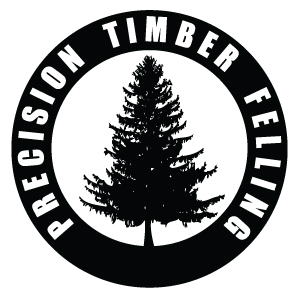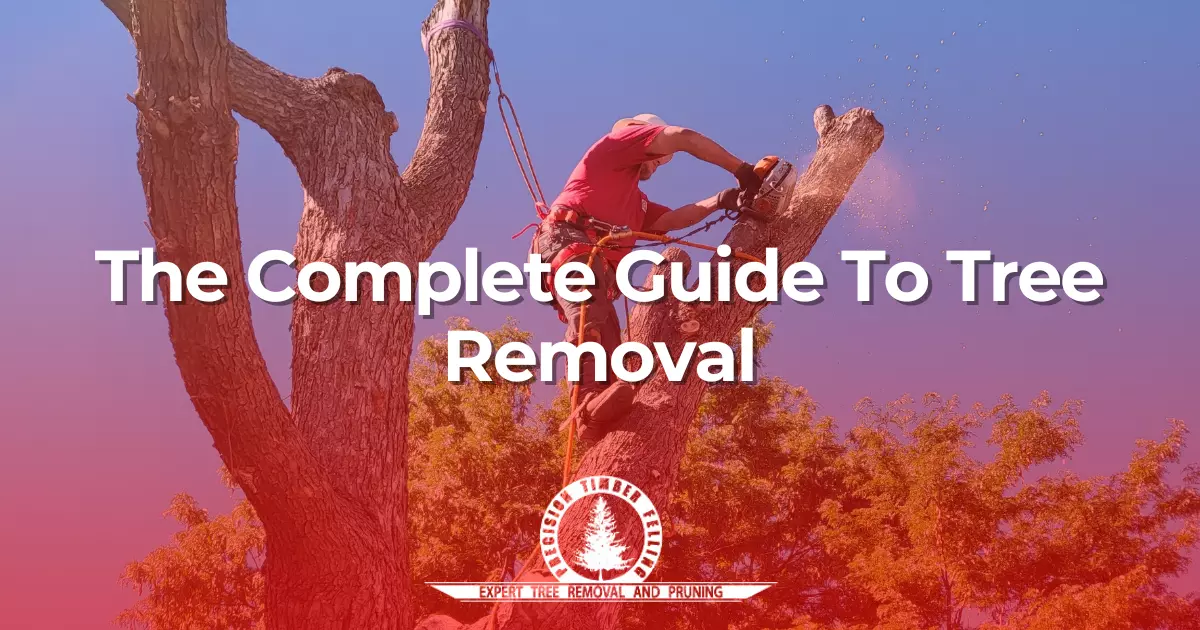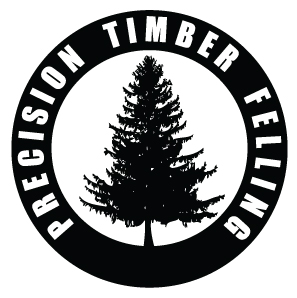Tree Removal 101: A Complete Guide to Safe and Efficient Methods
Are your trees getting the attention they need? Tree removal is crucial to managing your property’s safety and aesthetics. Over time, trees can develop problems such as disease, instability, or structure interference. These issues threaten the tree’s health and pose safety risks to your property and its inhabitants.
In this article, we’ll explore the essential considerations for tree removal. This includes everything from identifying when a tree poses a danger to understanding the legal requirements and the steps involved in safely removing a tree. We’ll also discuss the costs associated with tree removal, how to choose the right service for the job, and what to do after removing a tree. Additionally, we’ll look into alternatives to tree removal and preventative measures to minimize future risks. Keep reading to discover the critical practices of tree removal to ensure your property remains safe, attractive, and healthy.
What Is Tree Removal And Its Importance?
Tree removal is cutting down and eliminating trees from an area. This action is crucial for several key reasons. This includes safety, health, and space management. There are various circumstances under which a tree might need to be removed. Situations where trees are dead or diseased, may pose structural damage, or obstruct development.
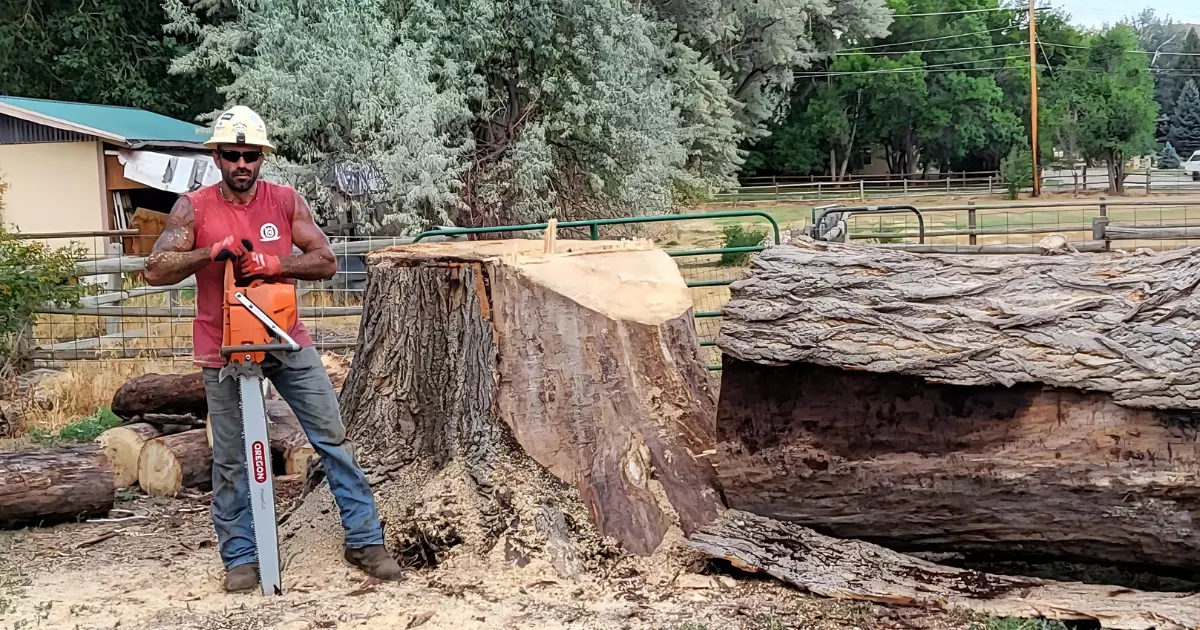
Safety is a primary concern that necessitates tree removal. Unstable or dead trees have a significant risk of falling. They could potentially cause damage to property and injury to people. Additionally, disease-afflicted trees can act as vectors, spreading pests or infections to neighboring healthy trees. This could undermine the overall health of an area’s vegetation.
Moreover, tree removal is vital to urban development and landscape management. It facilitates new construction projects, opens views, and helps avoid conflicts with utility services. In densely populated areas, managing tree populations is critical for keeping pathways, roads, and utilities accessible and functional.
Removing trees can also have environmental benefits. Eliminating trees that are too close together can reduce competition for essential resources like sunlight, water, and nutrients and allow the remaining trees to flourish. By removing some, you can maintain the beauty of trees.
Hence, tree removal is integral to managing property and environmental health. It tackles issues ranging from safety hazards and disease control to urban planning and ecological balance. Removing problematic trees helps create safer, healthier, and more enjoyable living spaces.
What Are The Factors Consider Before Tree Removal?
Before removing a tree, several critical factors must be evaluated to ensure the decision is justified and carried out correctly. These considerations help property owners balance safety, environmental health, and legal compliance.
Tree Health and Condition
Assessing the health of the tree is paramount. Dead or diseased trees beyond recovery pose significant risks and may necessitate removal. Immediately remove them to keep other trees healthy. Signs of poor health include visible decay, extensive dead branches, or fungal growth on the tree trunk.
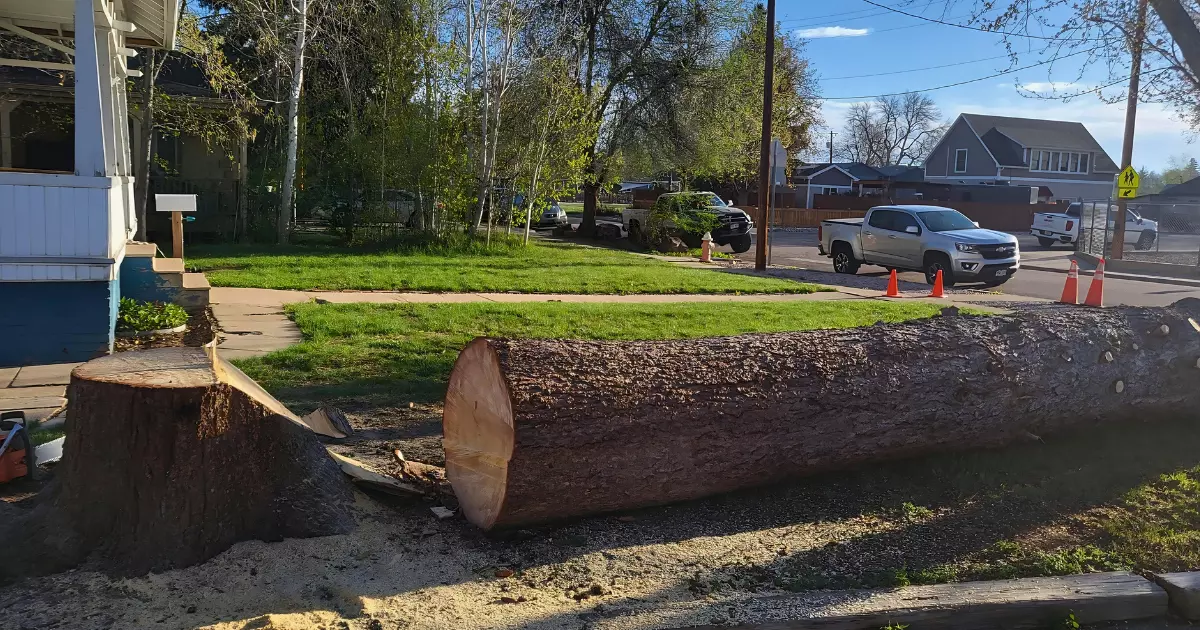
Safety Risks
There are many benefits of trees. But if a tree poses a potential danger to its surroundings, you need to make a crucial decision. Trees leaning towards homes, power lines, or public areas might require removal to mitigate safety hazards. These are common for street trees.
Legal Requirements
Understanding the legal landscape is essential. Many localities require a tree removal permit, especially for trees of a certain size or in designated areas. Property owners should research and comply with local regulations to avoid penalties.
Impact on The Environment
Considering the environmental impact is vital. Removing a tree can affect local wildlife and the overall balance of the ecosystem. Where possible, efforts should be made to preserve healthy trees that contribute positively to the environment.
Tree’s Age and Historic Value
A tree’s age and potential historic value may also influence the decision. Older, more mature trees can offer significant environmental and aesthetic benefits. This makes their preservation important when feasible.
Alternatives to Removal
Before deciding on removal, explore alternatives. Pruning or disease treatment might save a tree, reducing the need for drastic measures. Consulting with an arborist can provide insights into possible solutions.
What Legal Permissions Are Needed for Tree Removal in Colorado?
In Colorado, the regulations surrounding tree removal can vary by city, county, and sometimes even by specific neighborhoods, particularly those with homeowners associations (HOAs). Here’s a general idea of what to expect in Colorado, but remember to check the specifics for your area.
City and County Permits
Many cities within Colorado require permits for the removal of trees. This is especially necessary if they’re located on public property or in public right-of-way areas. For example, Denver has specific rules for tree removal on private property and requires a permit for removing trees in the public right-of-way.
Homeowners Association (HOA) Approval
If your property is part of an HOA, the association may have its own regulations and approval process for removing private trees. These rules can be more restrictive than city or county regulations. This is because they focused on maintaining the aesthetic or environmental standards of the community.
Protected Trees and Areas
Some areas of Colorado have special designations for historic, significant, or older trees that may be protected. These trees require special permission for removal. Additionally, properties located in designated wildlife habitats or near water bodies may face stricter controls to protect the environment. But for emergency tree removal, you might not need to obtain those special permits.
Property Lines and Neighbors’ Consent
As with other locations, confirming that the tree is on your property is essential. If a tree straddles a property line, you might need your neighbor’s consent to remove it. Colorado law can also affect how disputes over trees are handled, particularly regarding overhanging branches or roots.
Environmental Regulations
In certain areas, especially those close to natural reserves or parks, additional environmental assessments might be needed. This is to ensure that tree removal doesn’t negatively impact local ecosystems or erosion control measures.
To navigate tree removal in Colorado, here are our expert tips for you:
- Consult Local Regulations. Visit your city or county government’s website for detailed information on tree removal policies, permit requirements, and application processes.
- Contact a Professional. Licensed arborists or professional tree services in Colorado are familiar with local and state regulations. They can often manage the permit process for you. They adhere to industry standards to ensure that the removal is done safely and legally.
- Review Environmental Impact. In environmentally sensitive areas, consider the broader impact of tree removal. Explore alternatives or compensatory actions, such as planting new trees.
How to Safely Remove A Tree?
Removing a tree from your property is a task that requires careful planning and execution to ensure safety and compliance with regulations. The process involves several key steps. Each is designed to minimize risk to people, property, and the environment.
Assess The Situation
The first step in safe tree removal is thoroughly assessing the tree and its surroundings. Consider the tree’s size, condition, and proximity to structures. Check whether it is entangled with electrical lines or other obstacles. This assessment will help determine the best approach for removal and whether professional assistance is needed.
Gather The Right Tools
The tools required for tree removal depend on the tree’s size and location. Basic tools like a chainsaw, axe, ropes, and safety gear such as gloves, goggles, and a hard hat might suffice for small tree removal. Larger trees frequently call for more specialized tools and a variety of tree removal equipment. These are also best handled by experts from a tree removal company since they have the expertise and special machinery to remove those large trees.
Plan Your Escape Routes
Before making the first cut, plan at least two escape routes. There should be paths you can take to quickly move away when potential issues occur. You should be able to run away from the tree when it begins to fall. It is best to position at angles that avoid the predicted path of the falling tree.
Employ Some Cutting Techniques
The technique used to cut down a tree can vary. A typical technique entails making a notch cut on the side of the tree facing the direction you want it to fall. Make a back cut on the opposite side to allow the tree to fall safely. Precision is key to ensuring the tree falls in the intended direction.
Use Ropes for Control
When it comes to safely and precisely felling trees near structures or in situations requiring accuracy, ropes can be an invaluable tool for guiding the tree’s descent. This often requires multiple people and careful coordination.
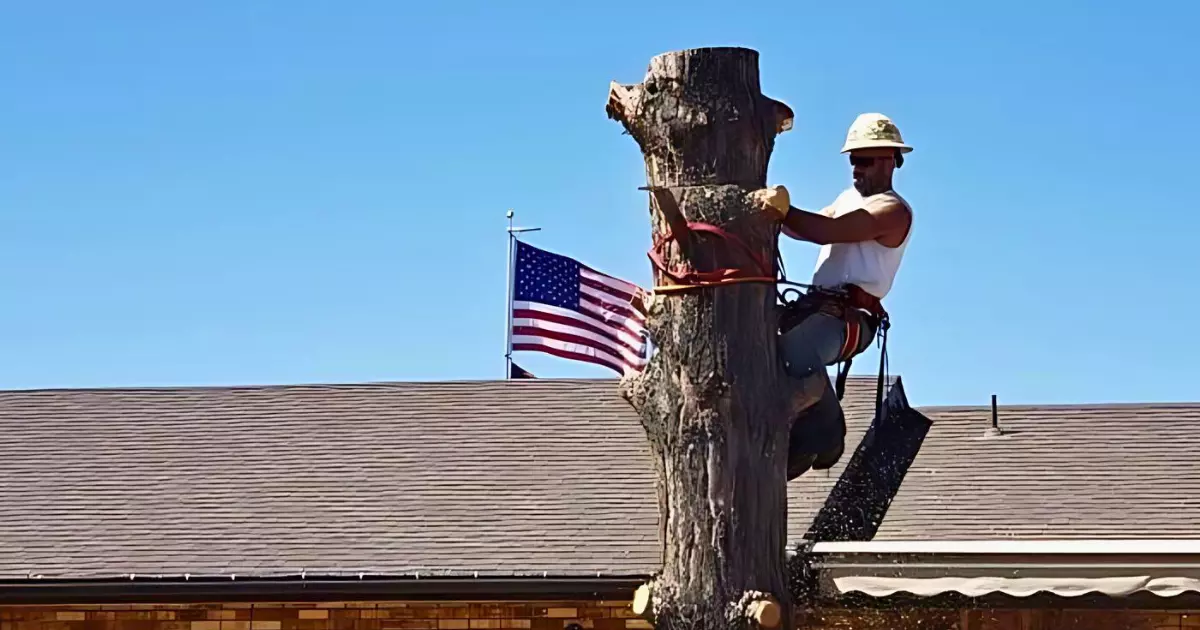
Clear The Area
Ensure the area around the tree is clear of people, pets, and valuables. Establishing a safe perimeter prevents accidents and injuries.
Ask for Professional Help
Hiring a professional tree removal service is strongly recommended for larger trees, those near power lines, or in tricky locations. These experts have the experience, equipment, and insurance to safely remove trees without causing harm to people or property.
Post-Removal Safety
After removing the tree, attention should turn to the stump. Tree stumps can be a tripping hazard or attract pests. Options for stump removal include grinding, chemical treatments, or digging it out. However, each has its own considerations for safety and effectiveness.
What Are The Factors Affecting Tree Removal Costs?
The cost of tree removal can vary widely depending on several factors. Here’s a breakdown of what typically influences the cost. Plus, you might encounter additional expenses.
Size of The Tree
The height and diameter of the tree are among the most significant factors affecting price. Large trees require more labor, specialized equipment, and safety precautions. All these increase the cost.
Tree Condition
The condition of the tree can also impact the cost. Dead, diseased, or decaying trees may be considered more hazardous to remove. They may also require additional safety measures that increase the price. Conversely, damaged trees in poor condition might be easier to take down than healthy ones. This is much cheaper.
Location and Accessibility
Trees located near buildings, electrical lines, or other structures can be more challenging and time-consuming to remove. Accessibility issues, such as trees in backyards with no direct access to heavy machinery can also increase prices.
Equipment and Labor
The cost includes compensation for the labor involved and the use of any equipment. Those tools may be chainsaws, cranes, and stump grinders. More complex removals that require specialized equipment will be more expensive.
Stump Grinding and Removal
Removing the stump is often not included in the initial quote for tree removal and can incur additional costs. Methods vary from grinding to chemical treatment or manual removal. Each has different price points.
Read also: Stump Grinding: The Secret to a Beautiful, Clear Landscape
Permits and Fees
Depending on where you live, you may need a permit to remove a tree. The cost of these permits can vary.
Cleanup and Disposal
The quote might or might not include the cost of cleaning up the debris and disposing of it. Be sure to clarify this with your service provider. Cleanup and disposal could add to the overall cost.
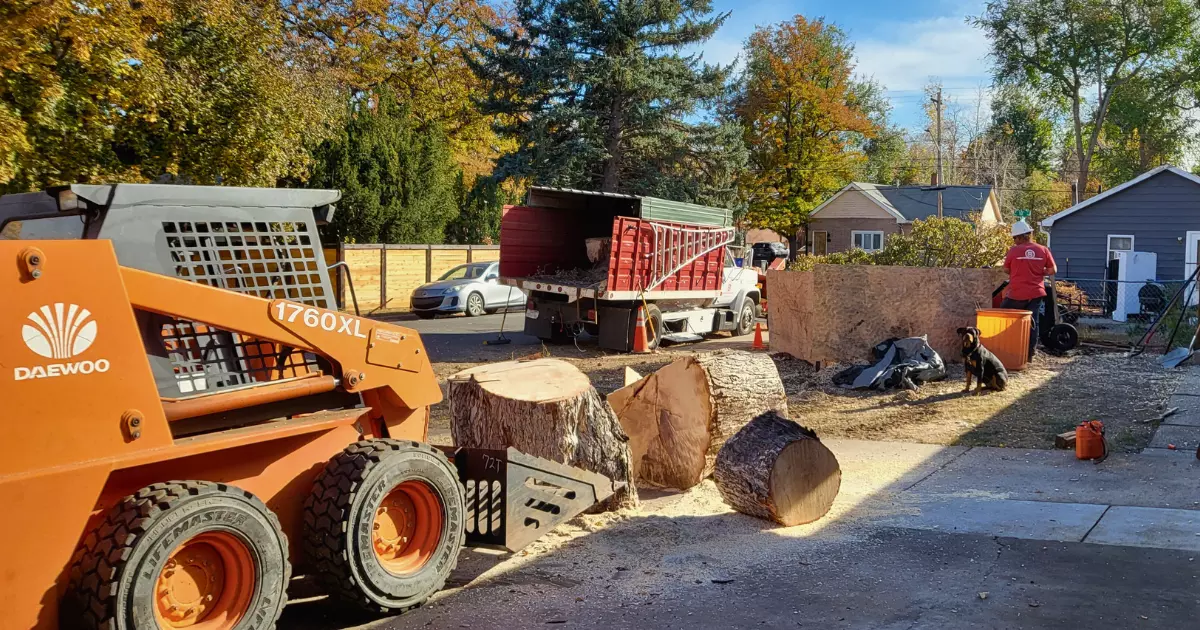
Additional Services
Some companies offer additional services like cutting and removing the wood, landscaping repair after removal or planting a new tree. However, these will incur extra fees.
What Should You Do After A Tree Is Removed?
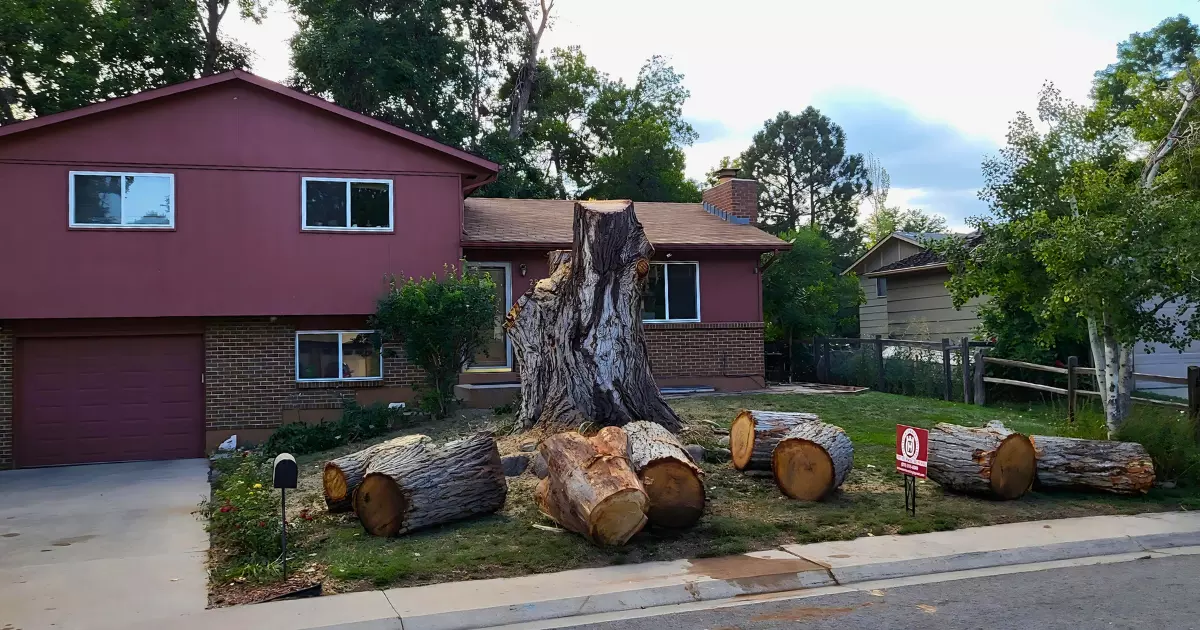
Removing a tree from your property marks the end of one chapter and the beginning of another. Once the tree has been safely brought down, several crucial steps remain to ensure the area is safe, restored, and ready for future growth. Here’s what to consider in the aftermath of tree removal.
Stump Removal and Grinding
The stump that remains after a tree is cut down can be an unsightly tripping hazard and attract pests. Decide whether you need stump removal or stump grinding. Tree stump removal involves excavating the stump and roots. This process reduces the stump to wood chips at ground level. But it all depends on your plans for the area. Grinding, on the other hand, leaves the roots in place. If you need a clean slate for replanting, stump removal is best for your needs.
Debris Cleanup
The process of tree removal leaves behind branches, leaves, and wood. Ensuring thorough cleanup is essential for safety and aesthetics. Consider whether you want to keep wood for personal use, such as firewood or landscaping projects. Otherwise, the removal service can often handle the disposal or chipping of the debris.
Soil Repair and Restoration
The absence of the tree can impact the soil and landscape. Assess the soil condition as it may be compacted or depleted of nutrients. You might need to add topsoil or compost to replenish nutrients. Also, ensure the area is level and ready for whatever comes next.
Replant
Replacing the removed tree with a new planting can help restore your property’s natural beauty and balance. Consider choosing a species well-suited to the location. Also consider factors like growth rate, size, and maintenance needs. Replanting is an opportunity to select a tree that matches your landscaping goals and environmental conditions. However, before you do it, make sure you have replanting permits.
Review Landscape Design
With the tree removed, you may have new options for utilizing the space. Are you planning to expand your garden? Do you want to add outdoor living space or redesign the landscape? Whatever it is, consider how best to integrate the area into your overall property design.
Monitor The Site
Keep an eye on the area in the weeks and months following the removal and any subsequent planting or landscaping. Monitoring helps ensure new plantings thrive and the site remains safe and attractive.
Reflect on Property Goals
Reflect on your broader property management goals. Tree removal can change the dynamics of your landscape. This offers a moment to consider future projects or improvements that align with your vision for the property.
How Do You Choose The Right Tree Removal Service?
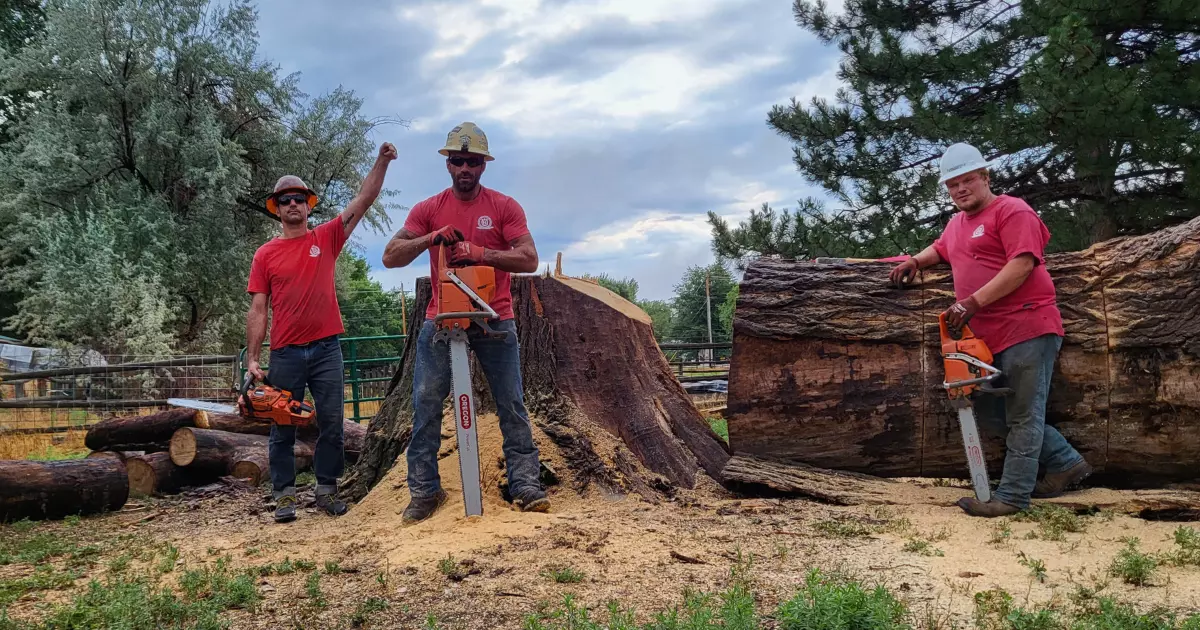
Choosing the right tree removal service is crucial to ensure safe and efficient tree removal in Colorado. Here are key steps and considerations to help you select a reputable tree removal expert.
- Check for Licenses and Insurance. Ensure the tree removal service has an arborist license. It is necessary to operate in your area. Check if they have liability insurance and workers’ compensation insurance. This protects you from liability in case of accidents or extensive damages during the tree removal process.
- Experience and Qualifications. Look for a service with extensive experience and qualified professionals. Certified arborists have undergone specialized training and certification. These indicate a higher level of expertise in tree care and removal.
- References and Reviews. Ask for references from recent clients to get an idea of the company’s reliability and quality of work. Additionally, check online reviews on platforms like Google, Yelp, or local community forums to gauge their reputation. It is always best to hire local tree removal experts.
- Get Multiple Quotes. Obtain quotes from several companies to compare prices. Be wary of quotes that are significantly lower than the others. Lower prices might mean a lack of experience, insurance, or a misunderstanding of the project requirements.
- Assess Professionalism and Communication. The company’s professionalism and willingness to answer your questions can be indicative of their service quality. They should be able to explain the process very well. This includes how they plan to minimize damage to your property and what steps they’ll take in case of unexpected issues.
- Check Equipment and Safety Practices. The right tree removal service should have the proper equipment for the job. They must also follow stringent safety protocols to protect their employees and your property. Inquire about their safety measures and equipment use.
- Understand the Services Offered. Make sure the company provides a clear outline of their services. This includes whether they will handle stump removal, cleanup, and disposal of the tree. Ask if these services are included in the quoted price.
- Permits and Regulations Compliance. A reputable service should be familiar with local regulations and able to obtain any necessary permits for tree removal. They can advise you on legal requirements and ensure the process complies with local laws.
- Written Agreement. Before work begins, ensure you have a written contract outlining the scope of work, cost, and any other agreements made between you and the company. This will help avoid misunderstandings and provide legal protection if needed.
What Are The Alternatives to Removing A Tree?
Before deciding to remove a tree, look for alternatives first. Alternatives can preserve your trees and address safety, health, and space concerns at the same time. Here are some viable options.
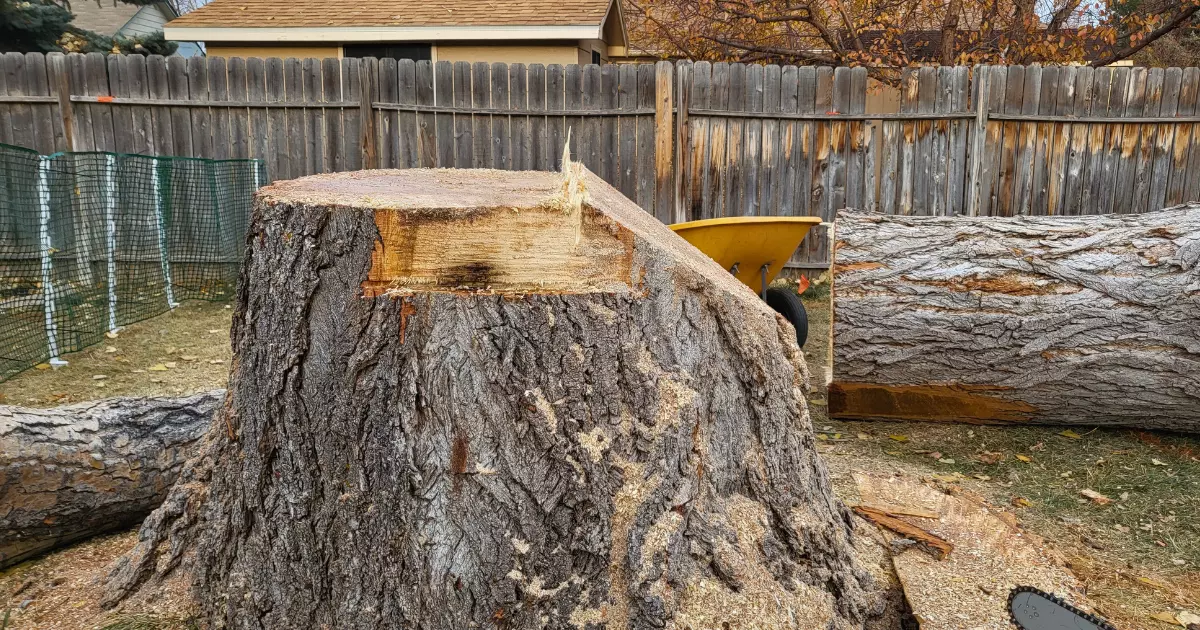
Pruning and Trimming
Pruning and trimming are essential for maintaining the health and stability of trees. Tree pruning involves removing specific branches and targeting dead or diseased parts to improve the tree’s structure and promote healthy growth. By eliminating weak or damaged branches, pruning reduces the risk of hazards such as falling limbs. It ensures safety for nearby structures and individuals. Also, pruning promotes proper air circulation and sunlight penetration. This creates a healthier environment for the tree and surrounding vegetation.
Read also: Tree Pruning Magic: Boost Your Gardens Health Beauty
Tree trimming, on the other hand, focuses on managing the tree’s size and shape without harming its health. This process involves selectively removing branches to control growth and maintain aesthetic appeal. Property owners trim away excess foliage to prevent trees from becoming overly large or obstructive. This minimizes the need for drastic measures like tree removal. Here’s our complete guide to tree trimming to learn more.
Cabling and Bracing
Cabling and bracing both support weak trees or heavy branches that might fall. The methods involve installing cables or rods to stabilize the tree. It prevents branches from dropping.
These techniques are crucial for trees with structural issues or decay and those with multiple trunks or limbs prone to splitting. By reinforcing weak spots, cabling and bracing help prolong the tree’s life and reduce the risk of damage or injury from falling branches. They’re effective solutions for enhancing tree safety, especially in areas with harsh weather.
Disease Treatment
Tree disease treatment involves consulting an arborist to diagnose and address the condition. By identifying the specific disease affecting the tree, appropriate treatment measures can be implemented to save it. Treatments may include applying fungicides or making changes to care and maintenance practices. Consulting with an arborist ensures that the most effective treatment plan is chosen and tailored to the tree’s specific needs and the disease’s severity. Proper treatment can help prevent the spread of the disease and restore the tree’s health. This will prolong its lifespan and preserve the beauty of the landscape.
Root Management
Root management addresses situations where a tree’s roots pose risks to nearby structures or utilities. The roots may threaten foundations or underground infrastructure. Root barriers or careful pruning techniques can be employed to mitigate these risks. They create a physical barrier that redirects root growth away from sensitive areas. Alternatively, selective pruning of roots can remove problematic sections while preserving the tree’s overall health. These strategies help resolve issues caused by tree roots without requiring the tree’s removal.
Crown Reduction
Crown reduction is a technique to decrease wind resistance and weight in a tree. It lessens the risk of falling during storms. This method involves selectively cutting back the tree’s canopy while maintaining its natural shape. By reducing the size of the crown, the tree becomes more structurally stable and less prone to toppling over during inclement weather. This approach is effective in enhancing tree safety while preserving its aesthetic appearance.
Transplanting
This option involves moving a tree from one location to another, typically trees are planted in the wrong spot. This process is viable for younger, smaller trees. It allows them to thrive in a more suitable environment. It can grow without risk to property or people in its original location by relocating the tree. Transplanting is a practical solution for preserving trees while addressing safety concerns and ensuring their continued growth and health.
How Can You Prevent Future Tree Removal?
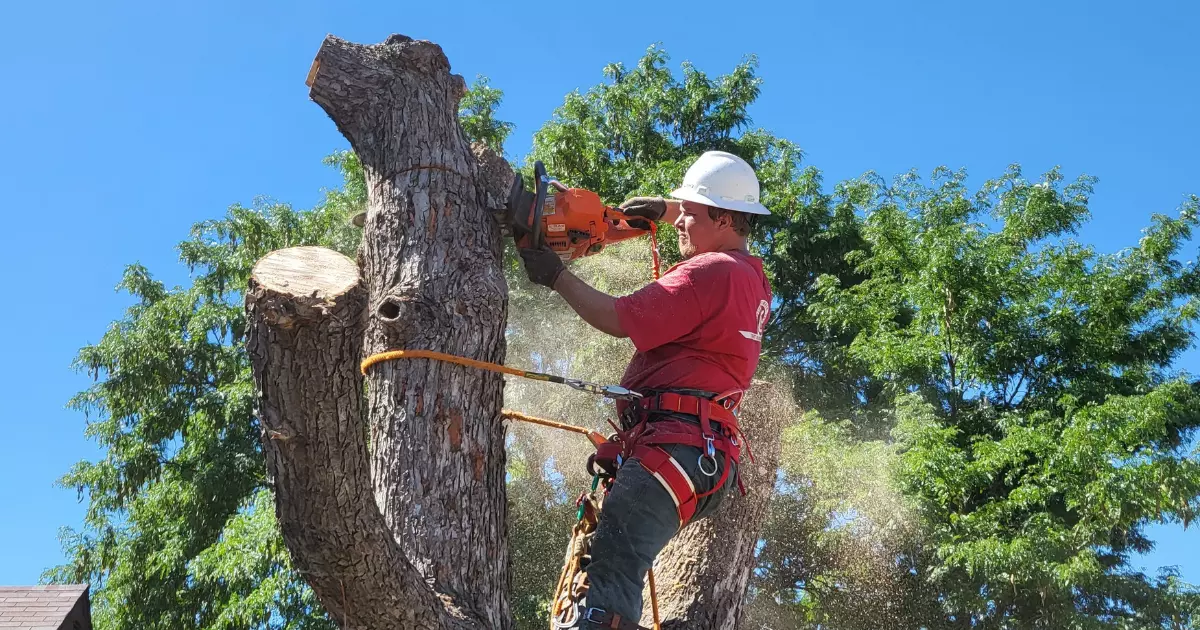
Preventing future tree removal involves proactive measures aimed at ensuring the health, stability, and proper location of trees. Here are some strategies to minimize the need for tree removal.
- Select The Right Tree Species. Choose tree species that are well-suited to your local climate, soil conditions, and available space. Consider the tree’s mature size and root system to avoid future issues with buildings, sidewalks, and utility lines.
- Proper Planting Location. Plant trees in locations where they have enough space to grow both above and below ground. Avoid planting too close to structures, underground utilities, or other trees. This reduces the risk of damage to property and the need for future removal.
- Regular Maintenance. Regular pruning and trimming help maintain tree health and structure. Remove dead or diseased branches promptly to prevent decay from spreading. However, avoid excessive pruning as it can harm the tree.
- Monitor Tree Health. Keep an eye on the health of your trees. Look for signs of disease or pest infestation. Those are discolored leaves, unusual leaf drops, or visible pests. Early detection and treatment can save a tree from needing to be removed.
- Soil Care and Mulching. Proper care of the soil around trees can improve their health and stability. Mulching helps retain soil moisture, regulates temperature, and reduces weed competition. Avoid piling mulch against the tree trunk because it causes rot.
- Watering. Young trees especially need regular watering to establish their root systems. Even mature trees benefit from watering during prolonged dry periods. Proper hydration supports healthy growth and reduces stress.
- Protect Tree Roots. Avoid soil compaction and physical damage to roots as they can harm the tree. Construction, heavy traffic, and landscaping activities near the tree should be carefully managed to protect the root system.
- Consult an Arborist. If you have concerns about a tree’s health or stability, consult a certified arborist. They can provide expert advice on care, potential risks, and whether a tree can be saved through treatments or selective pruning.
- Educate Yourself and Others. Understanding the value of trees and the factors that contribute to their health and safety can lead to better decision-making. You can also employ good tree management practices within your community.
By implementing these strategies, you can significantly reduce the likelihood of needing to remove trees in the future, allowing you to enjoy their benefits for years to come.
Wrapping Up
When it comes to tree removal, it is clear that dealing with dead or hazardous trees is essential. This is important not only for maintaining the appearance of your property but also for keeping it safe and secure. Throughout this journey, we’ve underscored the importance of expert knowledge and meticulous attention to detail in safely removing trees while preparing the landscape for future growth. By prioritizing safety and environmental responsibility, we’ve demonstrated the significance of professional intervention in preserving the health and integrity of your outdoor spaces.
Moving forward, the journey toward a safer and more vibrant landscape continues. With Precision Timber Felling as your trusted partner, you can confidently embark on the next rejuvenation phase. Our team stands ready to guide you through every step of the process, from initial assessment to post-removal care. This will ensure that your property remains a source of pride and enjoyment for years. Contact us today to take the first step towards transforming your outdoor space into a sanctuary of safety and natural beauty.
